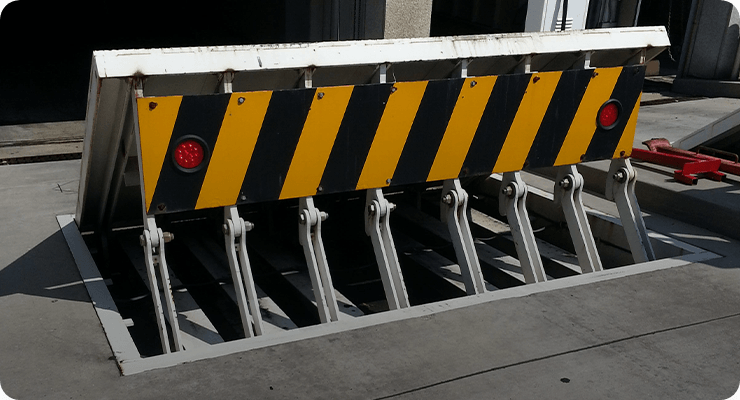All About Wedge Barriers

The Ultimate Guide To Wedge Barriers
g., springtime support 65 )might be repaired to completion of the spring pole 58 to enable compression of the springtimes 60. As the springs 60 are compressed in between the spring supports 62, the springtime assembly 54 produces a pressure acting on the web cam coupled to the springtime pole 58 in a direction 66. The remaining pressure used to
the cam to deploy the wedge plate 16 may might provided given an electromechanical actuator 84 or other actuator. The springtime setting up 54 and the actuator 84(e. g., electromechanical actuator)may run with each other to convert the web cam and lift the wedge plate 16.
As pointed out above, the springtime setting up 54 applies a constant pressure on the web cam, while the electromechanical actuator might be regulated to apply a variable force on the cam, thus allowing the training and decreasing( i. e., releasing and withdrawing )of the wedge plate 16. In particular personifications, the consistent pressure used by the springtime setting up 54 might be flexible. g., electromechanical actuator) is impaired. As will certainly be valued, the spring assembly 54 may be covered and safeguarded from debris or various other elements by a cover plate(e. g., cover plate 68 displayed in FIG. 4) that might be considerably flush with the elevated surface 38 of the foundation 14. As mentioned over, in the released placement, the wedge plate 16 serves to block access or traveling past the obstacle 10. The obstacle 10(e. g., the wedge plate 16 )may block pedestrians or lorries from accessing a property or path. As reviewed over, the barrier 10 is connected to the support 30 protected within the foundation 14,

front braces 71. As an outcome, the affiliation assemblies 72 might pivot and rotate to enable the collapse and check over here extension of the link assemblies 72 during retraction and deployment of the bather 10. The affiliation settings up 72 reason motion of the wedge plate 16 to be limited. For instance, if a lorry is taking a trip in the direction of the released wedge plate 16(e. For instance, in one condition, the safety and security legs 86 might be expanded throughoutupkeep of the obstacle 10. When the safety legs 86 are deployed, the safety and security legs 86 sustain the weight of the wedge plate 16 versus the surface 12. As a result, the training device 50 might be shut off, serviced, removed, changed, etc. FIG. 5 is partial viewpoint view of an embodiment of the surface-mounted wedge-style barrier 10, highlighting the web cam 80 and the camera surface areas 82 of the lifting device 50. Especially, two webcam surfaces 82, which are described as lower web cam surfaces 83, are positioned listed below the webcam 80. The lower web cam surfaces 83 may be dealt with to the surface area 12 (e. For instance, the reduced webcam surfaces 83 and the placing plate 85 may form a solitary piece that is safeguarded to the support 30 by screws or various other mechanical bolts. Additionally, 2 camera surface areas 82, which are referred to as top cam surface areas 87, are positioned over the webcam 80 and coupled to (e. In various other embodiments, interfering layers or plates may be placed between the surface area 12 and the lower camera surfaces 83 and/or the wedge plate 16 and the upper additional resources cam surfaces 87 As mentioned above, the web cam
80 equates along the web cam surfaces 82 when the wedge plate 16 is raised from the retracted setting to the released setting. In addition, as discussed over, the spring assembly 54 (see FIG. 3 )may give a force acting upon the cam 80 in the direction 102 using spring rod 58, which might reduce the force the electromechanical actuator 84 is called for to apply to the webcam 80 in order to activate and raise the wedge plate 16. 1 )to the released position(see FIG. address 4). As shown, the web cam 80 includes track wheels 104(e. g., rollers), which get in touch with and convert along the cam surfaces 82 throughout procedure.